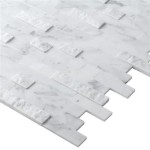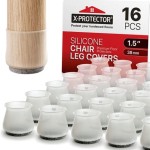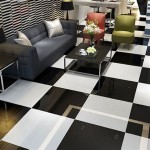Gray Slate Bathroom Floor Tile: A Comprehensive Guide
Gray slate bathroom floor tile has become a popular choice for homeowners and designers seeking a balance of natural beauty, durability, and versatility. Slate, a metamorphic rock formed from compressed sedimentary mud and clay, offers a unique texture and aesthetic that elevates the bathroom space. Its inherent properties make it well-suited for the often-damp and high-traffic environment of a bathroom, providing both practical and visual benefits.
This article will provide a detailed exploration of gray slate bathroom floor tile, covering its advantages, disadvantages, different types of finishes, installation considerations, maintenance requirements, and design versatility. The goal is to equip individuals with the necessary information to make informed decisions regarding incorporating gray slate into their bathroom renovations or new construction projects.
Aesthetic Appeal and Design Versatility
One of the primary reasons for the enduring popularity of gray slate bathroom floor tile lies in its aesthetic appeal. Slate's natural variations in color, texture, and veining create a visually interesting and unique surface. No two slate tiles are exactly alike, contributing to a one-of-a-kind look that adds character and depth to the bathroom. The gray color palette, ranging from light silvery grays to deep charcoal tones, provides a neutral backdrop that complements a wide range of design styles, from modern minimalist to rustic traditional.
The versatility of gray slate allows it to be easily integrated with other bathroom elements. It pairs well with various materials, including wood, metal, glass, and ceramic. The cool tones of gray slate provide a calming and serene atmosphere, making it ideal for creating a relaxing and spa-like bathroom environment. Furthermore, gray serves as a neutral canvas, allowing for the incorporation of bolder colors and patterns in other aspects of the bathroom design, such as wall paint, accessories, or accent tiles.
Slate tiles are available in various sizes and shapes, offering further design flexibility. Large format tiles can create a seamless and contemporary look, while smaller tiles can be arranged in intricate patterns for a more traditional or decorative effect. The texture of slate can also be varied, from smooth and honed surfaces to rough and cleft finishes, allowing for customization based on the desired aesthetic and functional needs.
Beyond flooring, gray slate can also be used for other bathroom applications, such as shower walls, backsplashes, and vanity countertops. This creates a cohesive and unified design throughout the space, enhancing the overall aesthetic appeal. The natural beauty of slate adds a touch of sophistication and elegance to any bathroom, making it a desirable choice for homeowners seeking a timeless and stylish look.
Durability, Water Resistance, and Safety
In addition to its aesthetic qualities, gray slate bathroom floor tile is renowned for its durability and water resistance, making it a practical and long-lasting flooring option for the bathroom. Slate is a dense and hard-wearing material that can withstand the daily rigors of foot traffic, moisture exposure, and temperature fluctuations commonly found in bathrooms. Its inherent strength makes it resistant to scratches, chips, and cracks, ensuring that it maintains its appearance and structural integrity for years to come.
Slate's natural composition makes it highly water resistant. The tightly packed mineral structure of slate prevents water from easily penetrating the surface, mitigating the risk of water damage, mold growth, and mildew formation – common concerns in bathroom environments. This inherent water resistance makes slate a suitable choice for areas prone to moisture, such as shower floors and walls. However, it is important to note that slate is not completely impervious to water, and sealing is recommended to further enhance its water resistance and prevent staining.
Furthermore, slate offers a degree of slip resistance, especially when it has a textured or cleft finish. This is a significant advantage in bathrooms, where wet surfaces can pose a safety hazard. The natural texture of slate provides traction, reducing the risk of slips and falls. However, it is still advisable to exercise caution when walking on wet slate floors and to consider using non-slip mats or rugs in particularly slippery areas.
The longevity of slate flooring contributes to its overall value. While the initial cost of installation may be higher than some other flooring options, its durability and resistance to wear and tear result in lower maintenance and replacement costs over time. This makes gray slate bathroom floor tile a worthwhile investment for homeowners seeking a durable, safe, and water-resistant flooring solution.
Installation, Maintenance, and Long-Term Care
Proper installation is crucial for ensuring the longevity and performance of gray slate bathroom floor tile. While experienced DIYers may be able to tackle the installation process, it is generally recommended to hire a professional tile installer with expertise in working with natural stone. A professional installer will have the necessary tools and knowledge to prepare the subfloor, properly lay the tiles, and ensure a level and even surface.
Prior to installation, the subfloor must be clean, level, and structurally sound. Any imperfections in the subfloor can affect the final appearance and performance of the slate flooring. A cement board underlayment is often recommended to provide a stable and moisture-resistant base for the tiles. The tiles should be laid using a high-quality thin-set mortar specifically designed for natural stone. Proper spacing between the tiles is essential to allow for grout lines, which help to distribute stress and prevent cracking.
After the tiles have been laid and the mortar has cured, grout is applied to fill the gaps between the tiles. The choice of grout color can significantly impact the overall appearance of the floor. A grout color that complements the gray slate can create a cohesive and unified look, while a contrasting grout color can highlight the individual tiles and add visual interest. It is important to use a grout sealant to protect the grout from staining and moisture penetration.
Maintenance of gray slate bathroom floor tile is relatively straightforward. Regular sweeping or vacuuming is necessary to remove dirt and debris. For deeper cleaning, a mild detergent or stone cleaner specifically designed for natural stone should be used. Harsh chemicals, abrasive cleaners, and scrub brushes should be avoided, as they can damage the surface of the slate. It is also important to wipe up spills promptly to prevent staining.
Sealing the slate is an important aspect of long-term care. A penetrating sealer should be applied to the tiles after installation and periodically reapplied as needed. The frequency of resealing will depend on the type of sealer used and the level of traffic in the bathroom. Sealing helps to protect the slate from staining, water damage, and the absorption of oils and other liquids. With proper installation and regular maintenance, gray slate bathroom floor tile can provide years of beauty and functionality.

Daltile Cascade Ridge Slate 12 In X 24 Glazed Ceramic Floor And Wall Tile 15 04 Sq Ft Case Cr081224hd1pv The Home

Newage Products Slate Gray Stone Look 27 6 Mil X 12 In W 24 L Waterproof Interlocking Luxury Vinyl Tile Flooring 403 2 Sq Ft Pallet 12452 At Lowes Com

Gray Slate Staggered Bath Floor Tiles Transitional Bathroom

Florida Tile Home Collection Longitude Slate Grey 12 In X 24 Matte Porcelain Floor And Wall 435 84 Sq Ft Pallet

Dark Gray Slate Herringbone Pattern Bath Floor Tiles Transitional Bathroom

Adoni Black Slate Hexagon Wall And Floor Tile 10 In

Chakra Slate Wall And Floor Tile Etsy

Monta Blue 12x24

75 Subway Tile Slate Floor Bathroom Ideas You Ll Love August 2025 Houzz
:fill(white)/www.toppstiles.co.uk/static/media/catalog/product/p/i/piscola_black_slate.jpg?strip=all)
Slate Bathroom Tiles Topps







